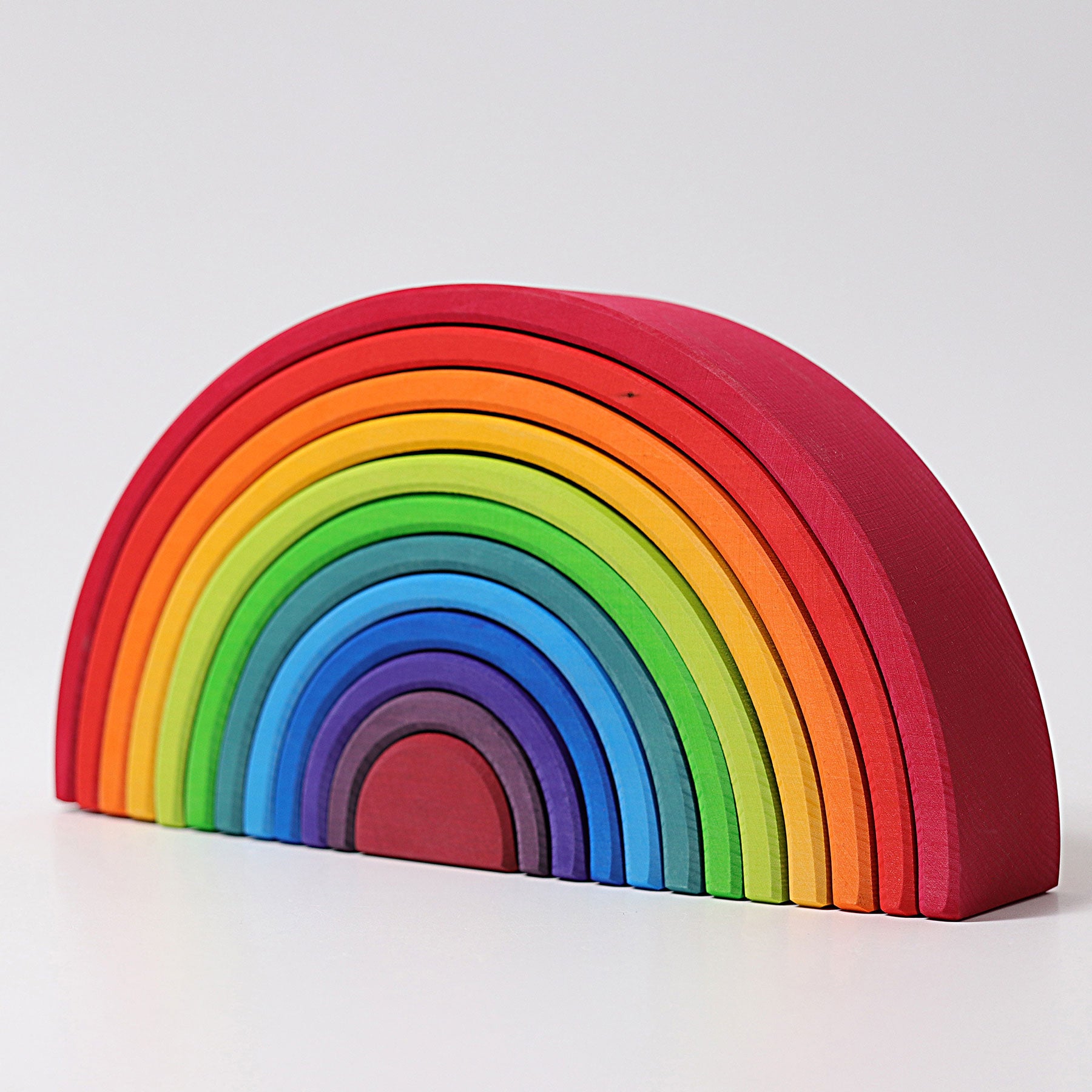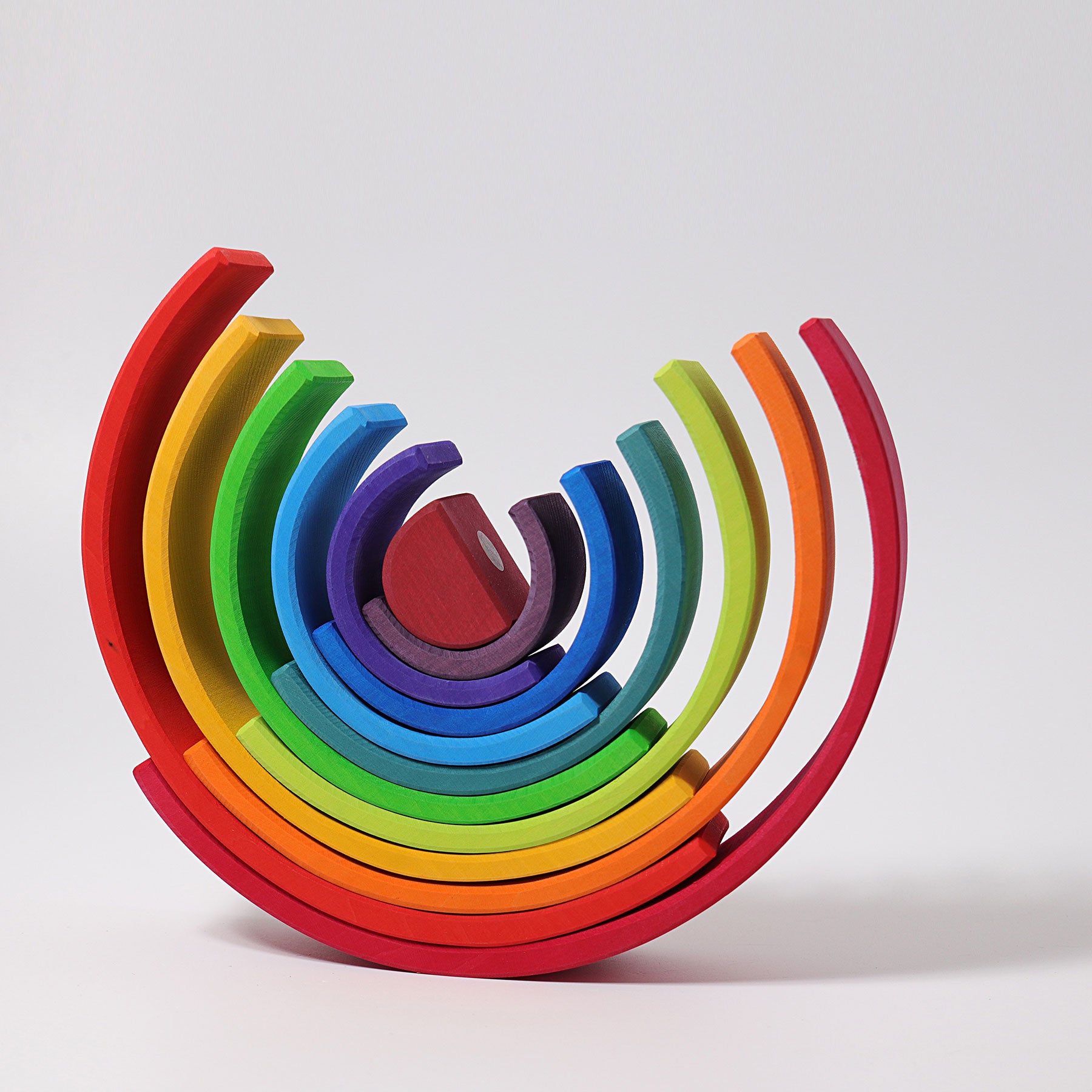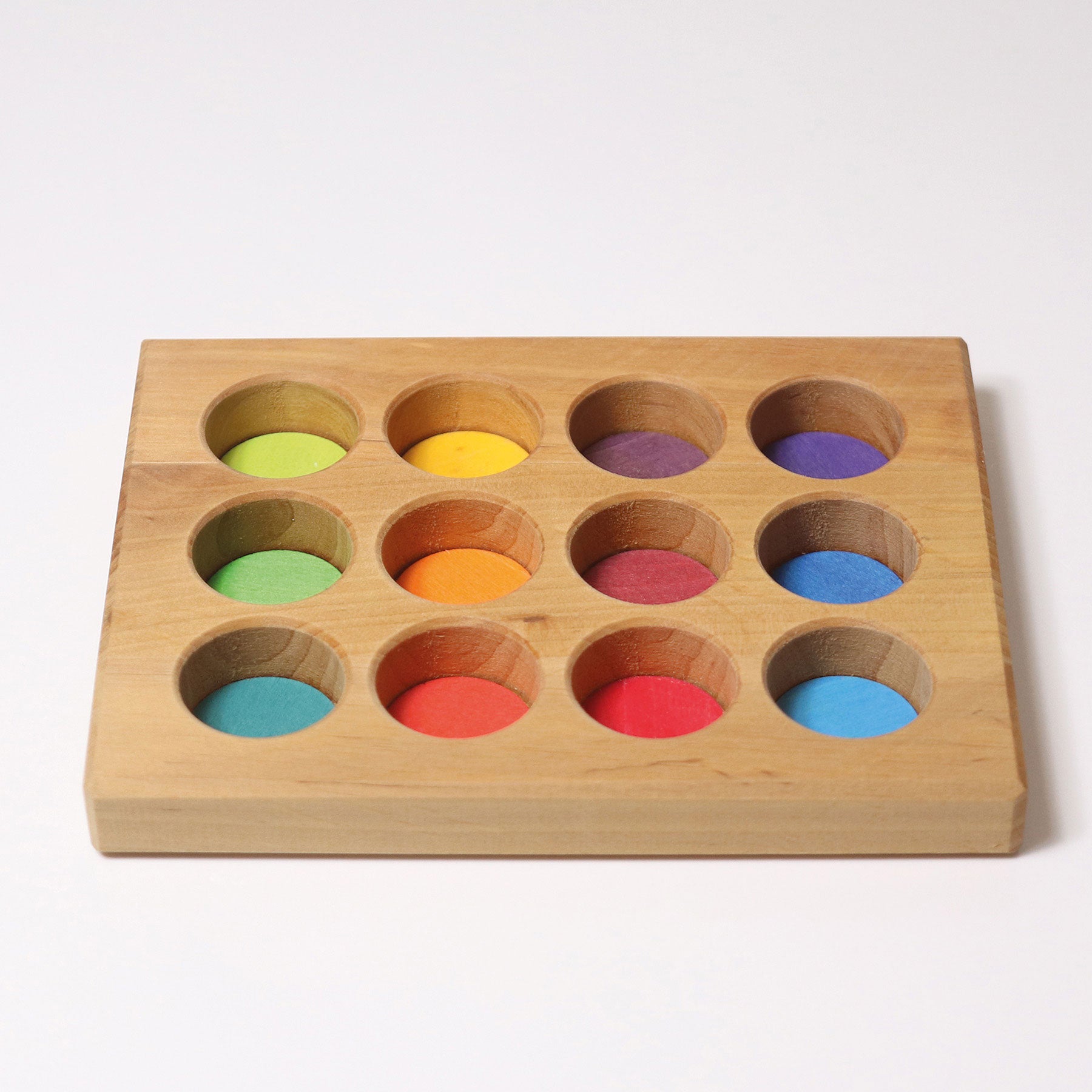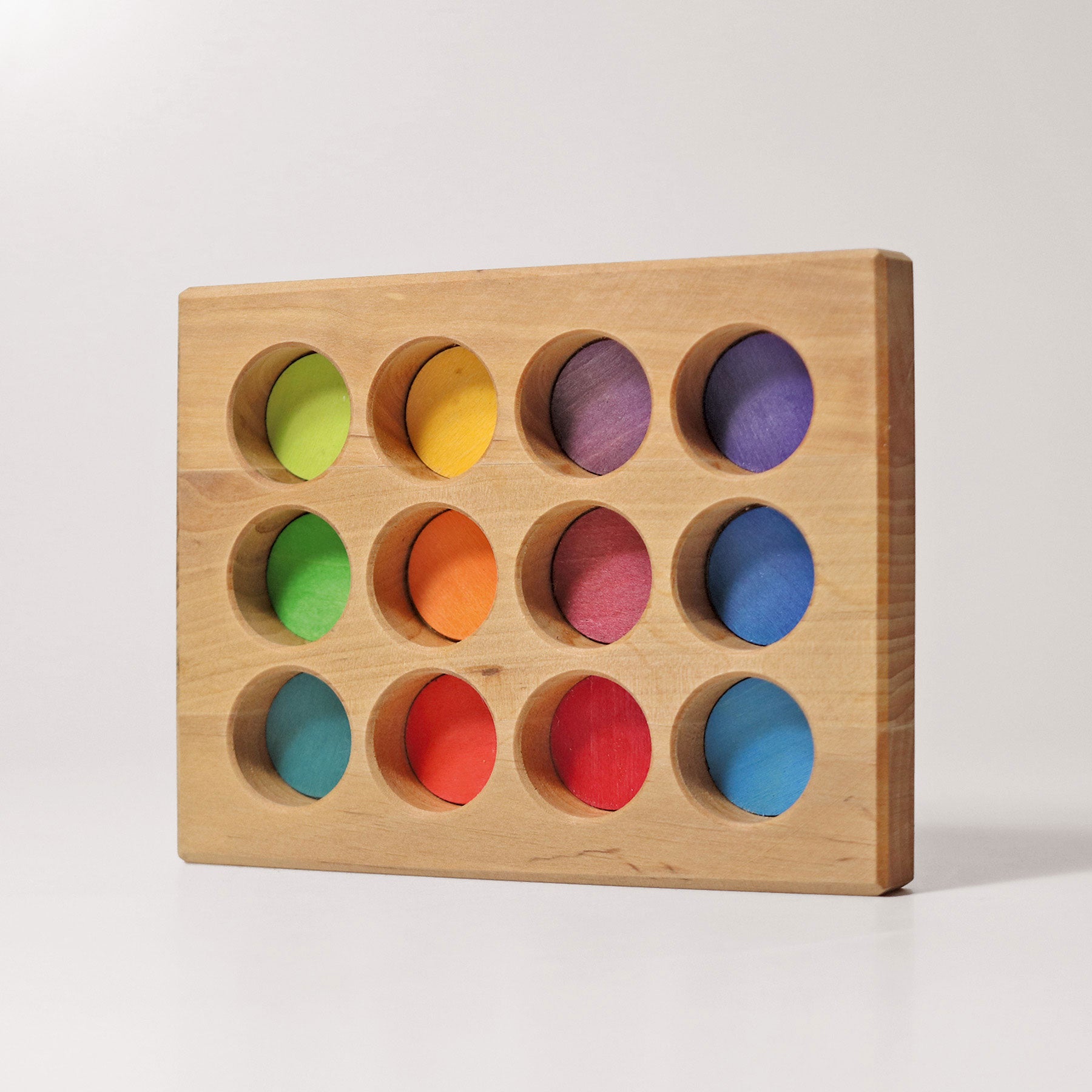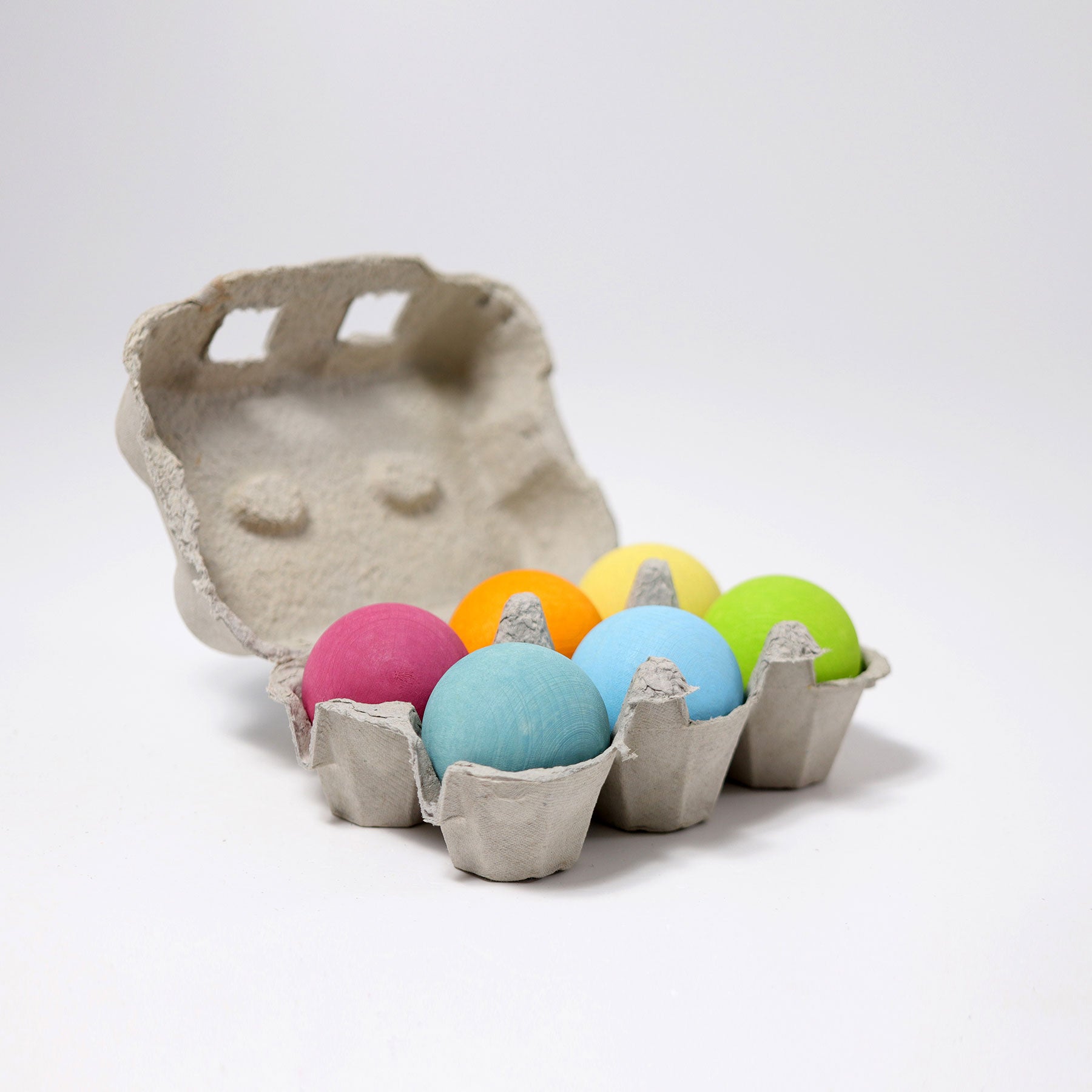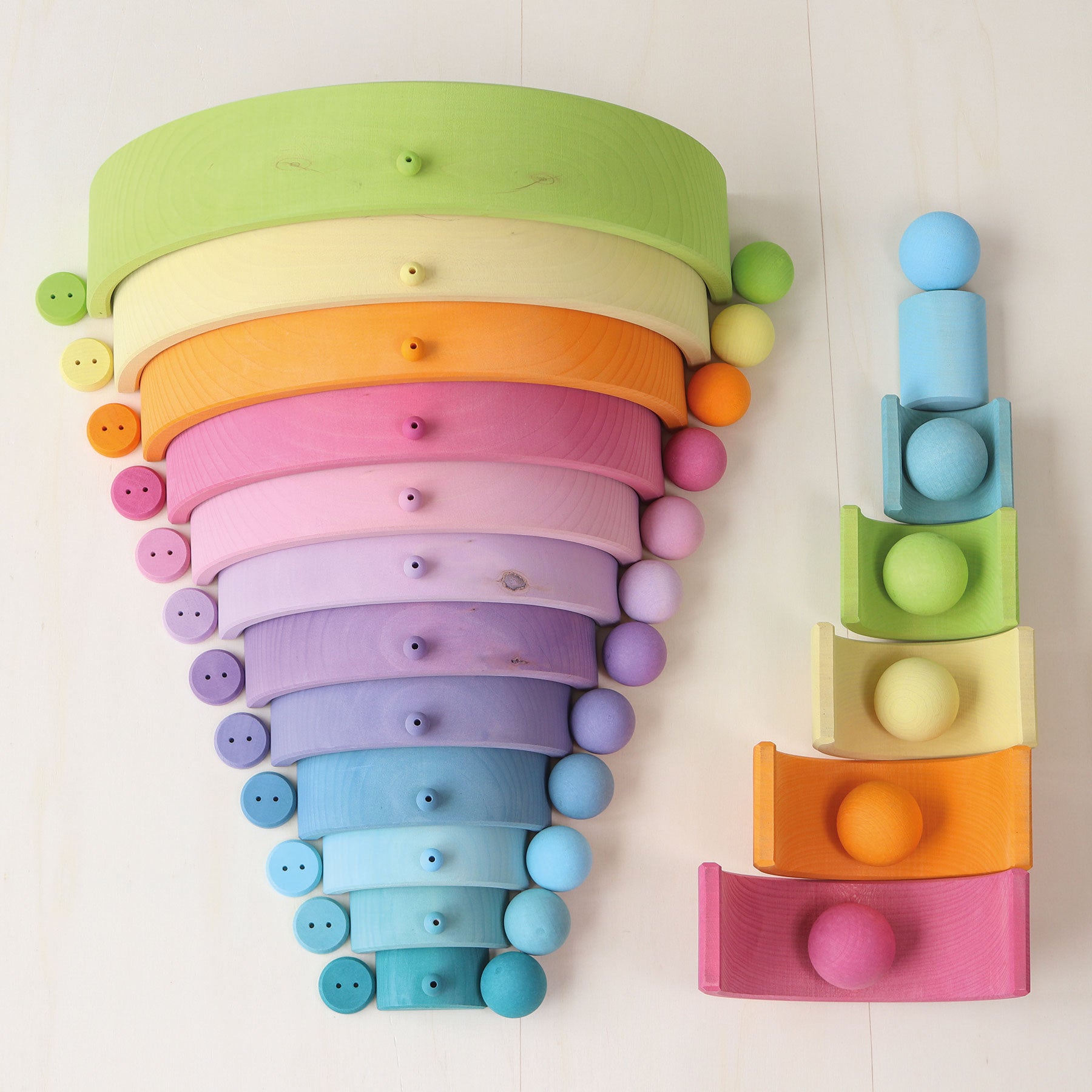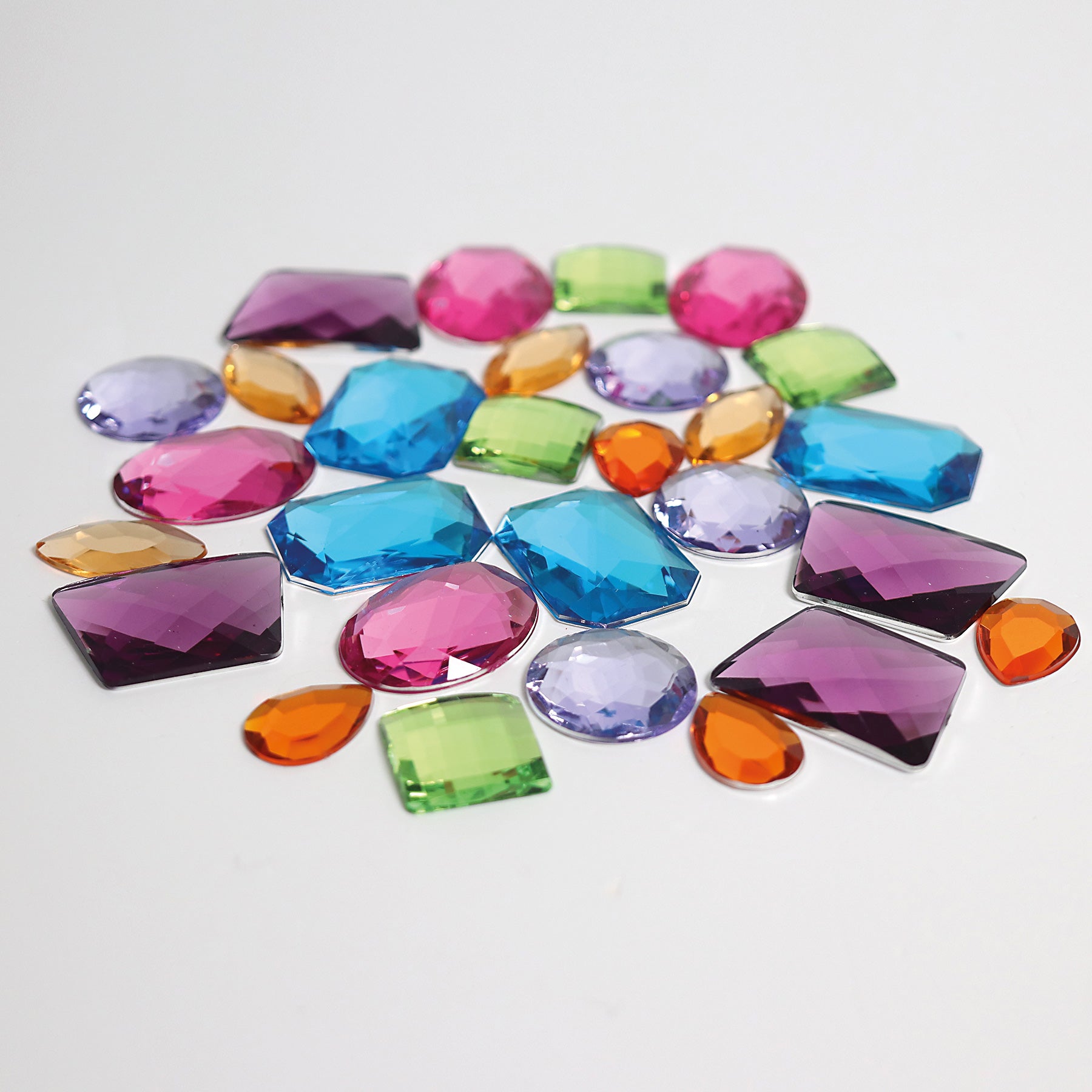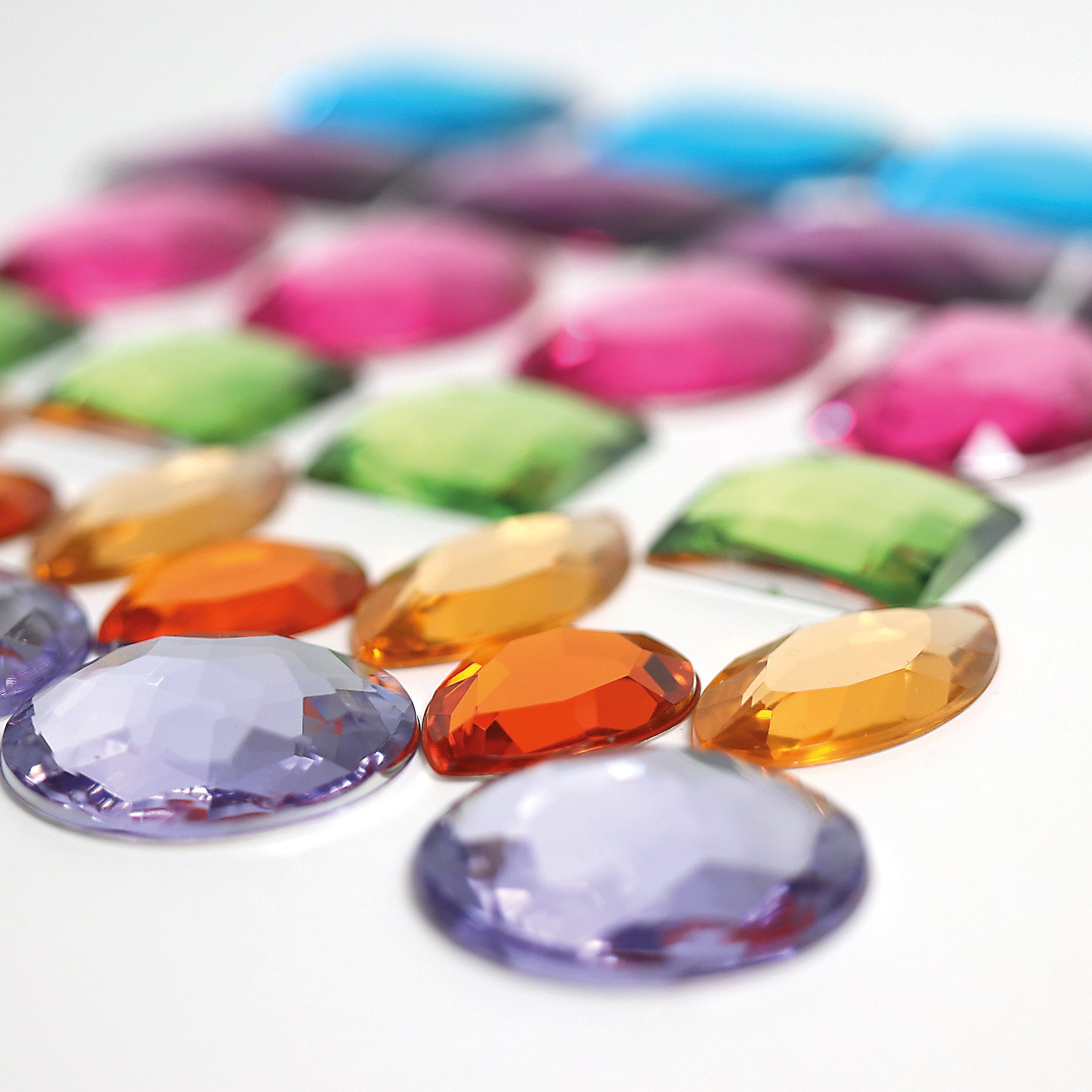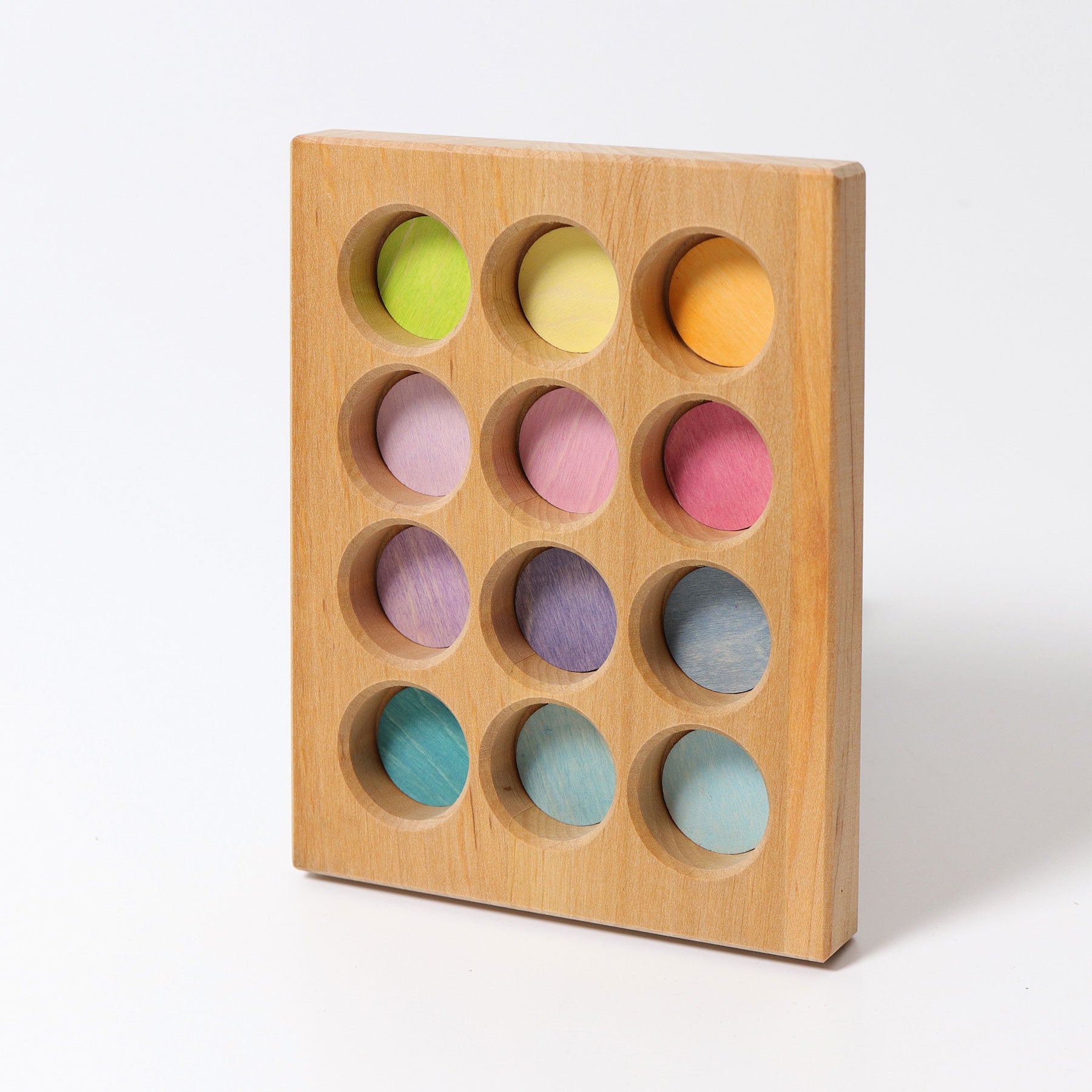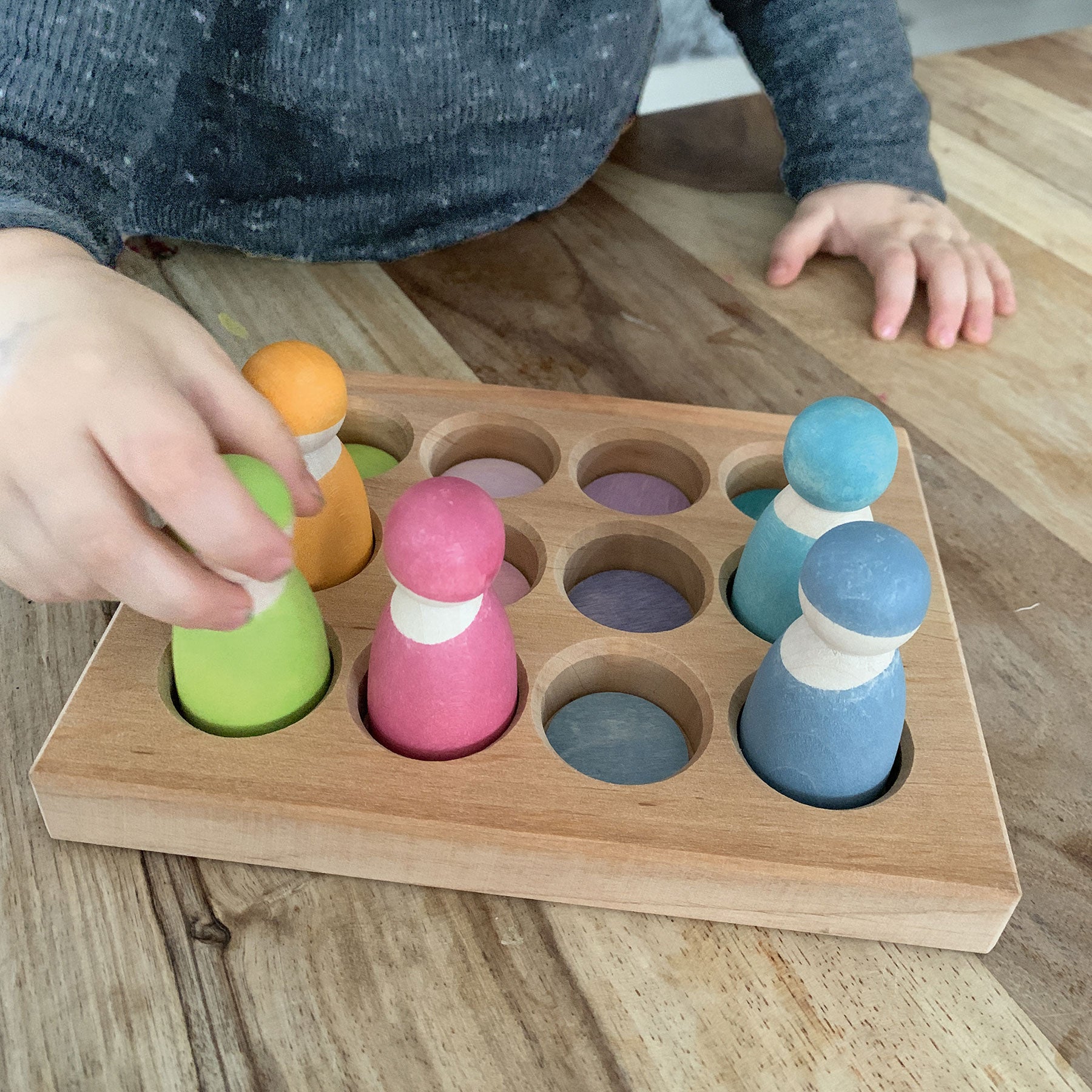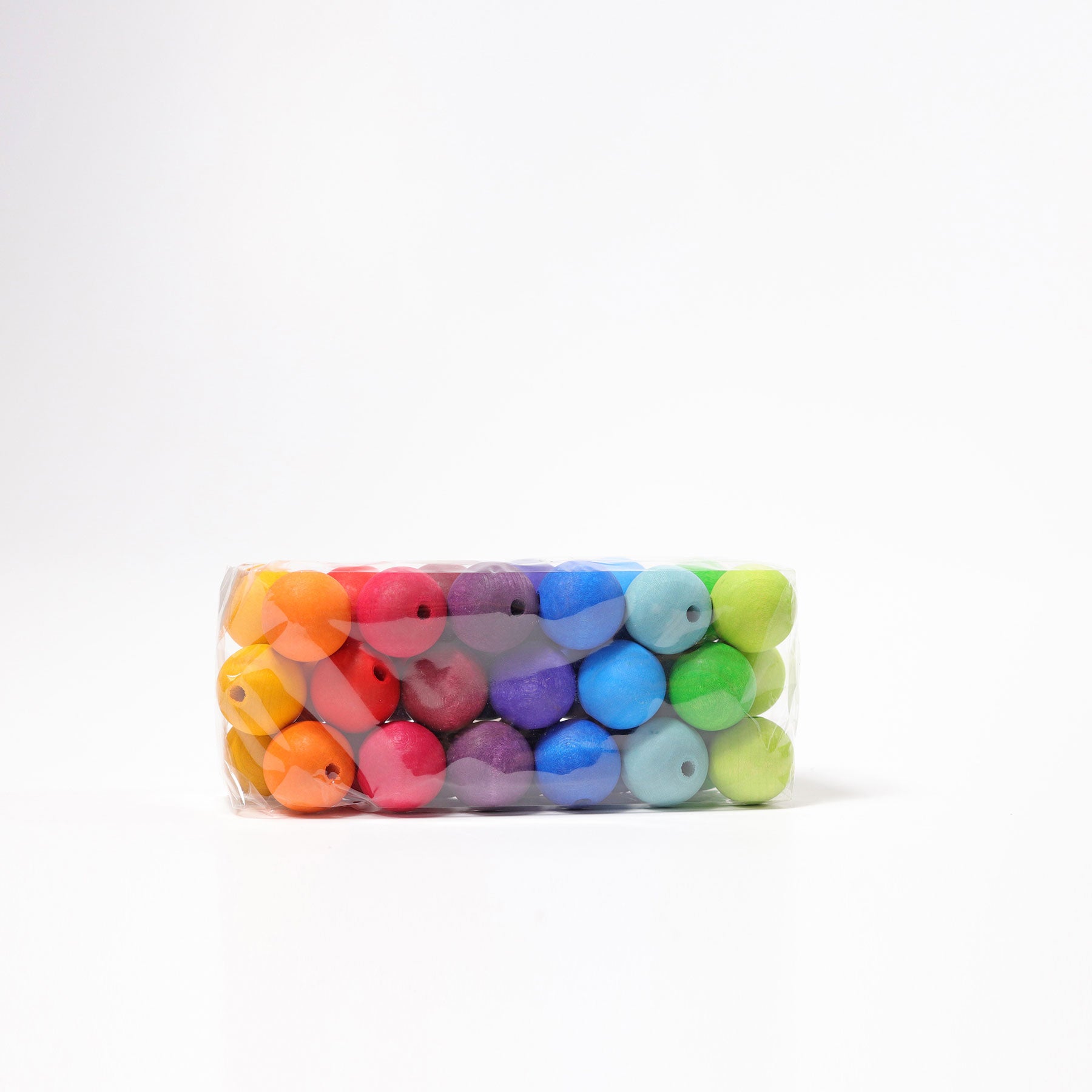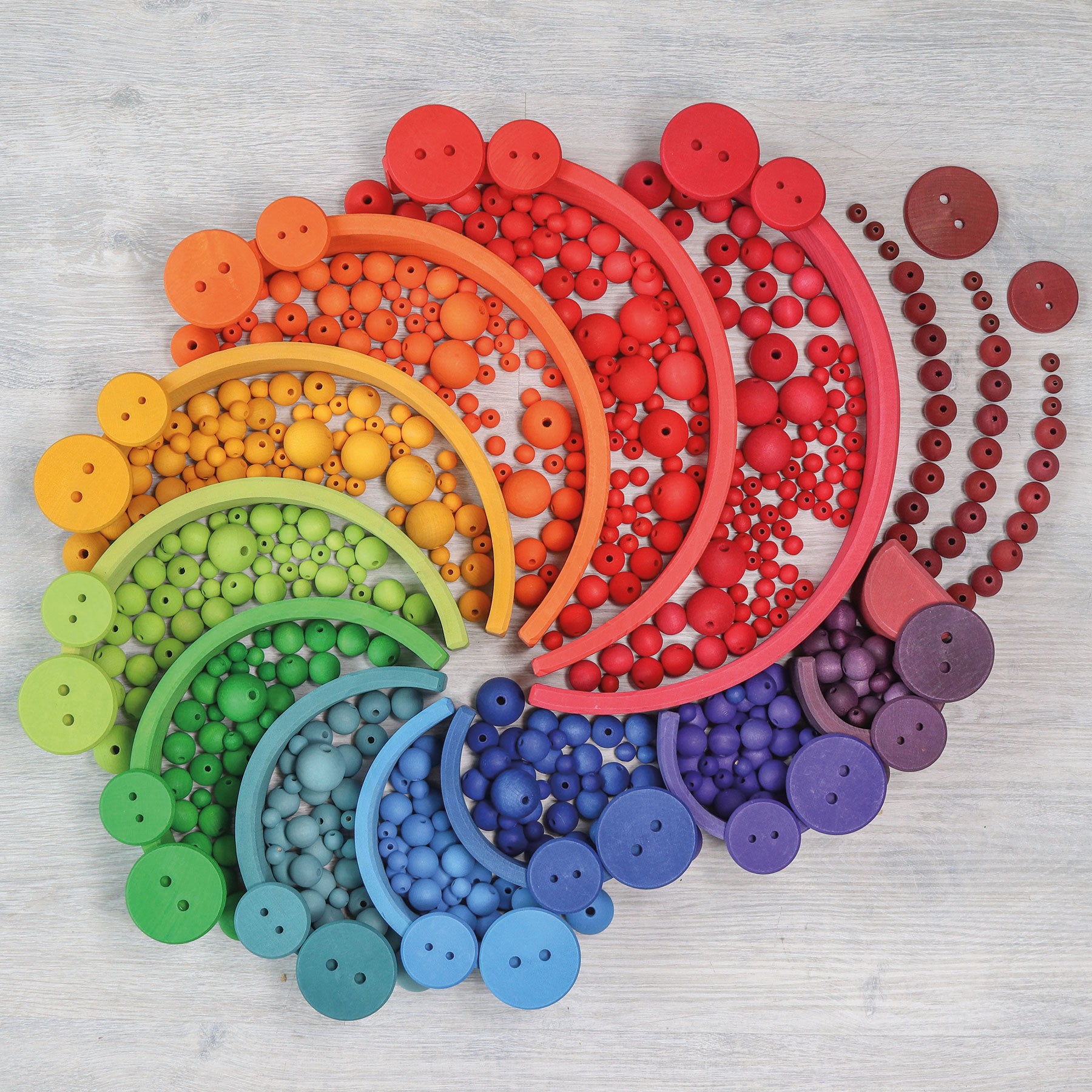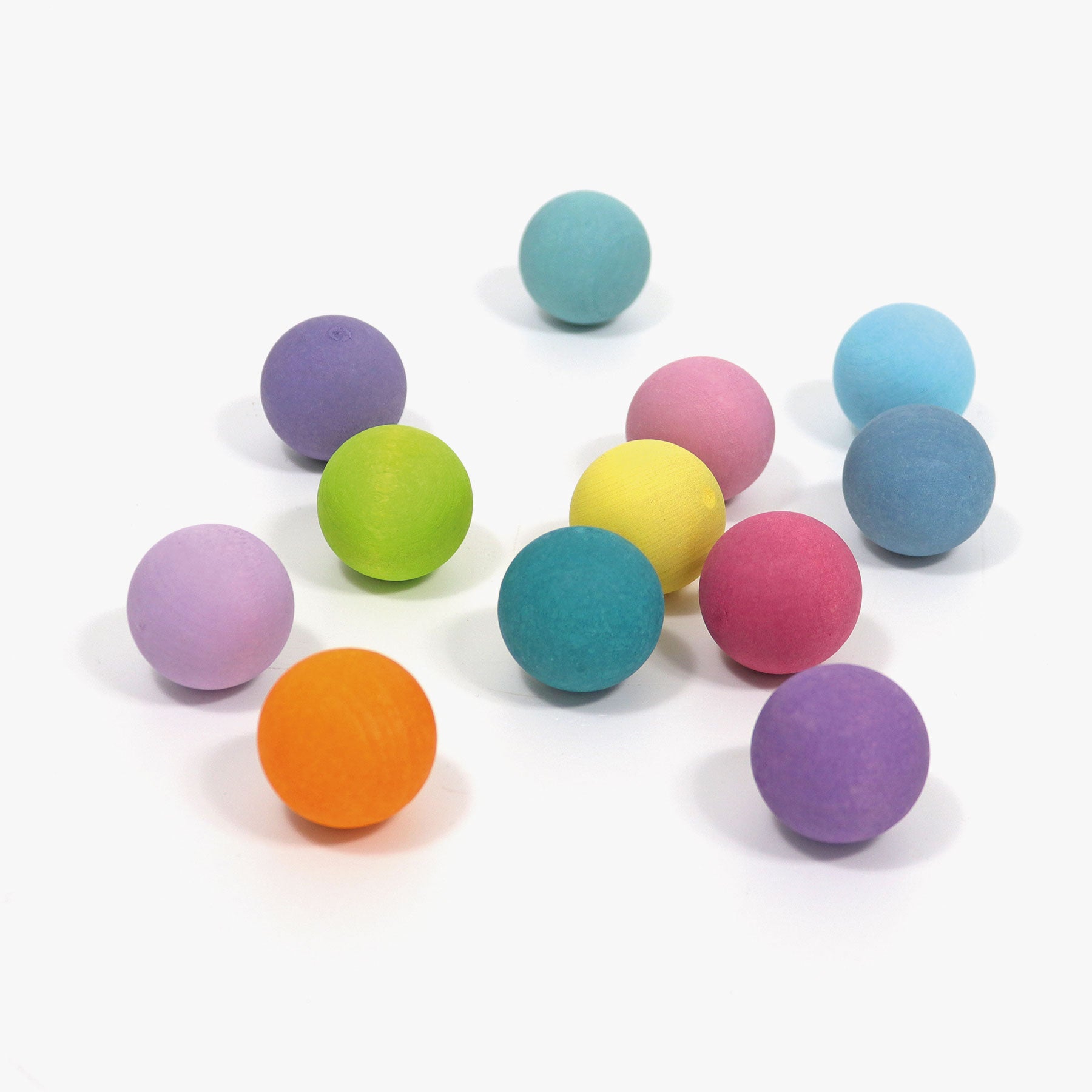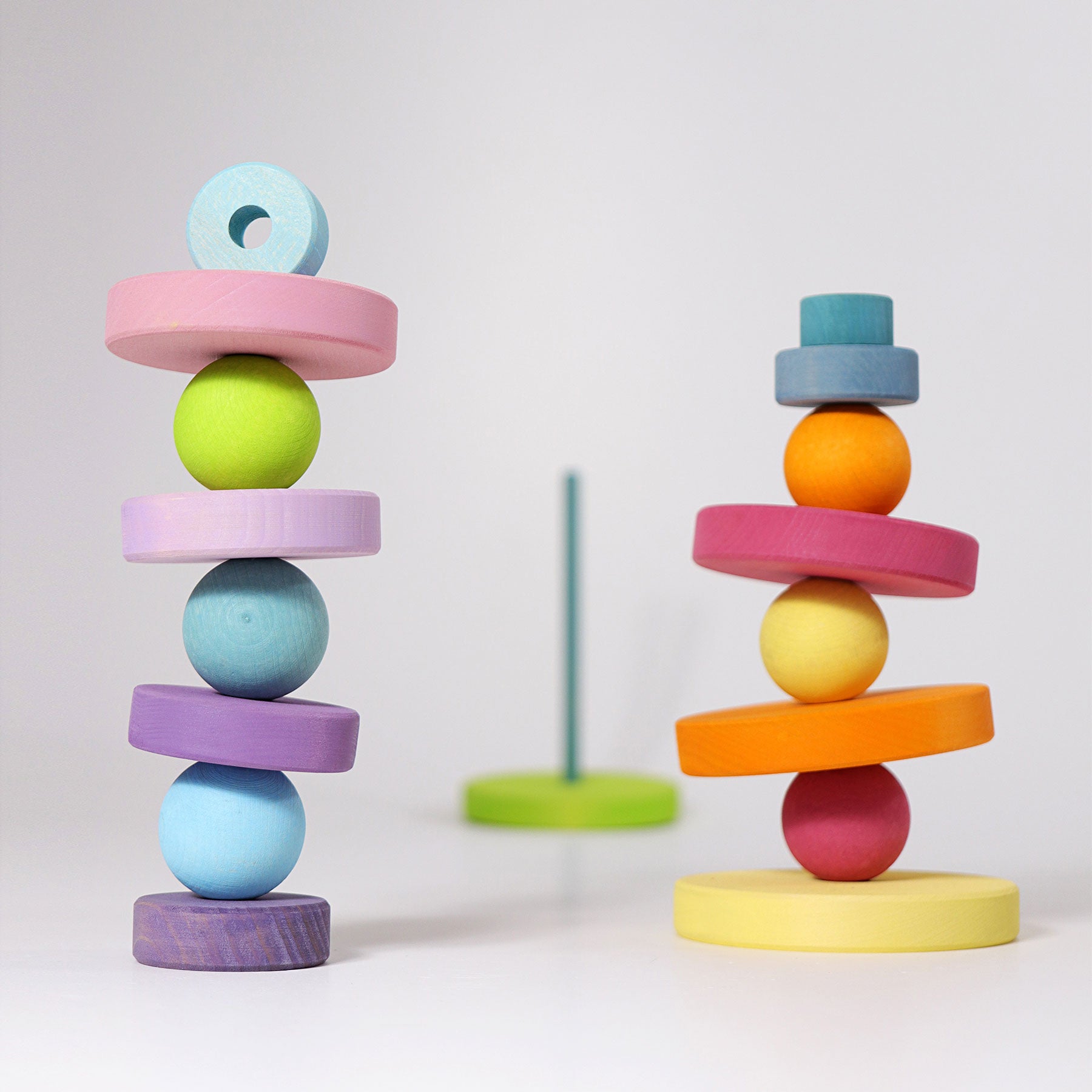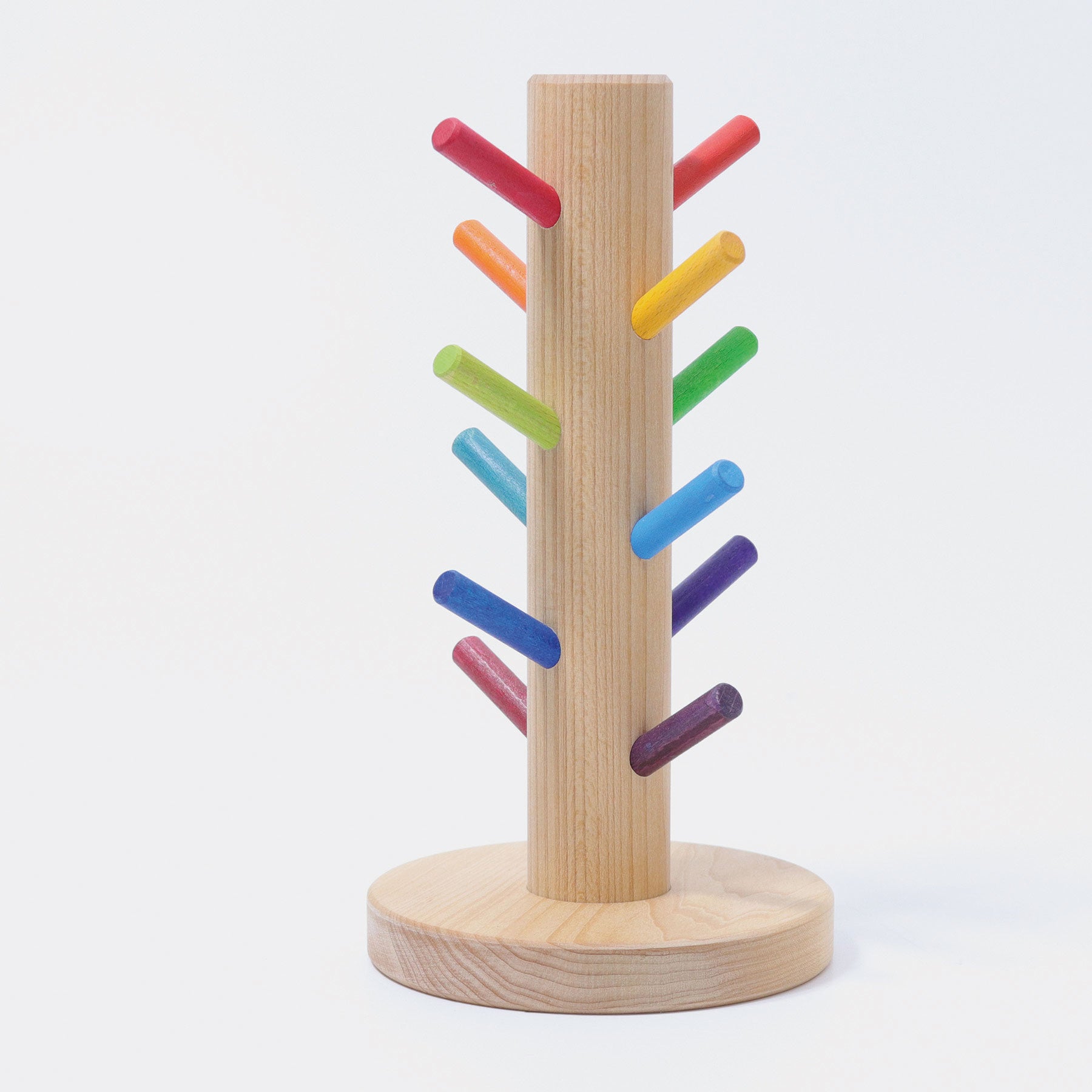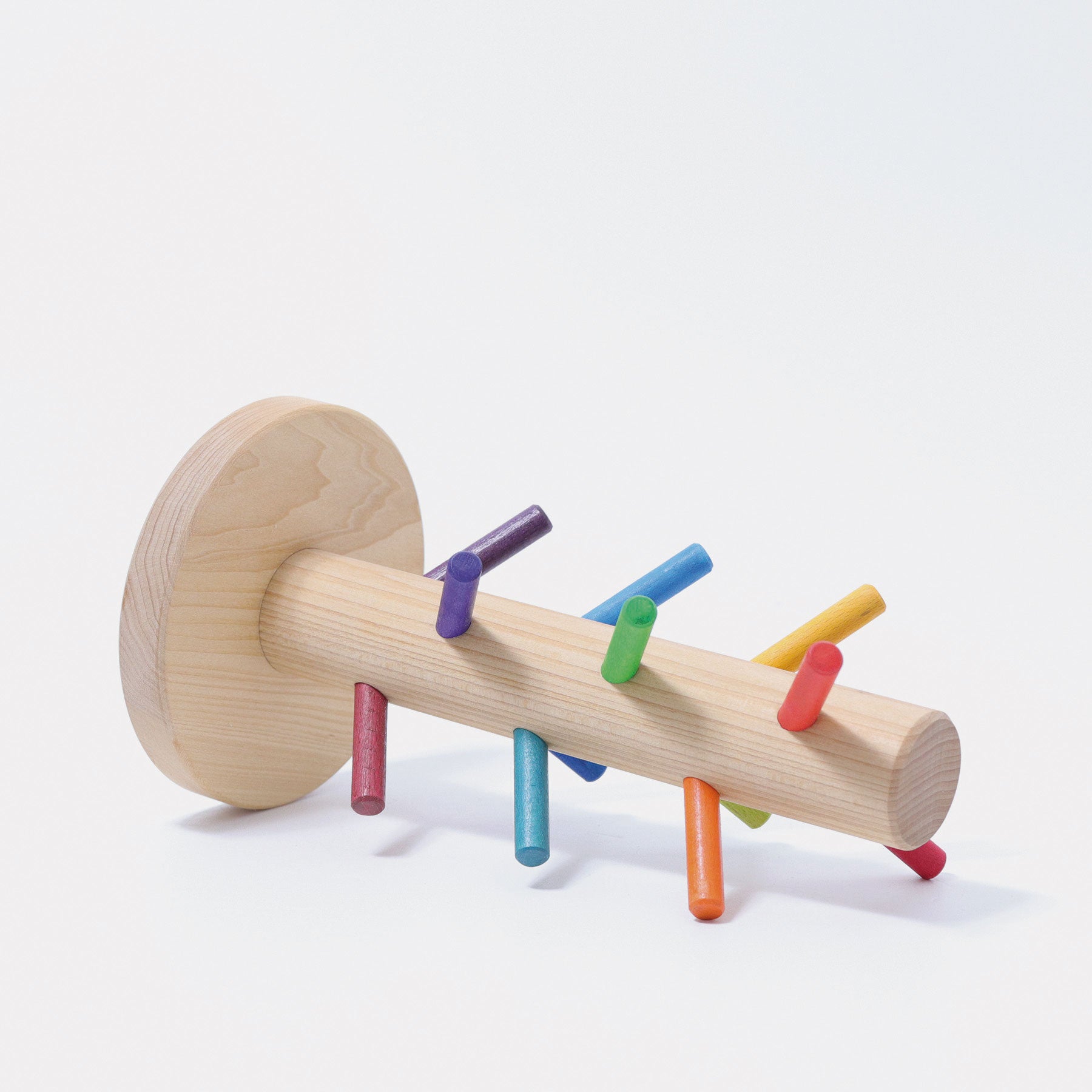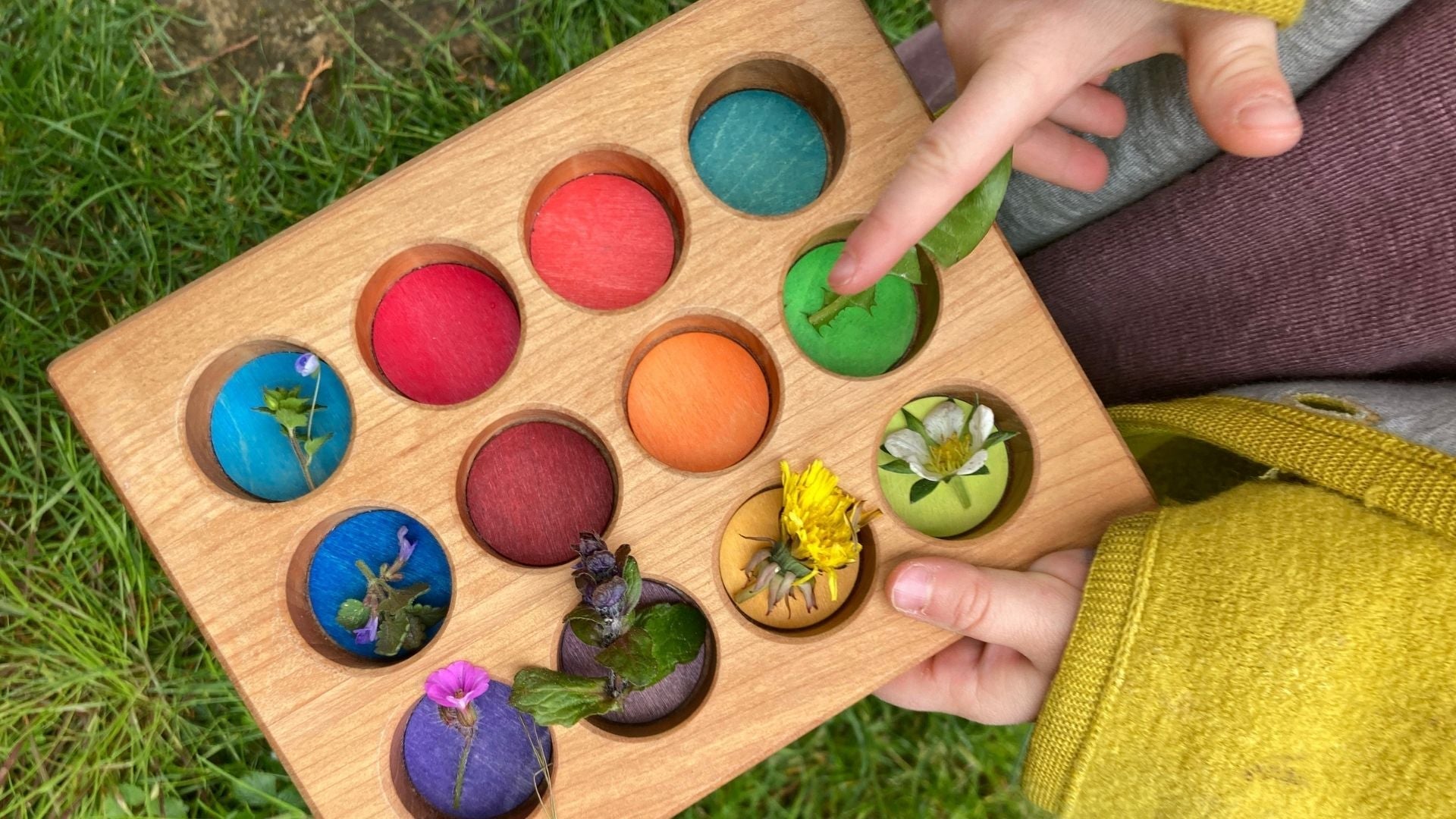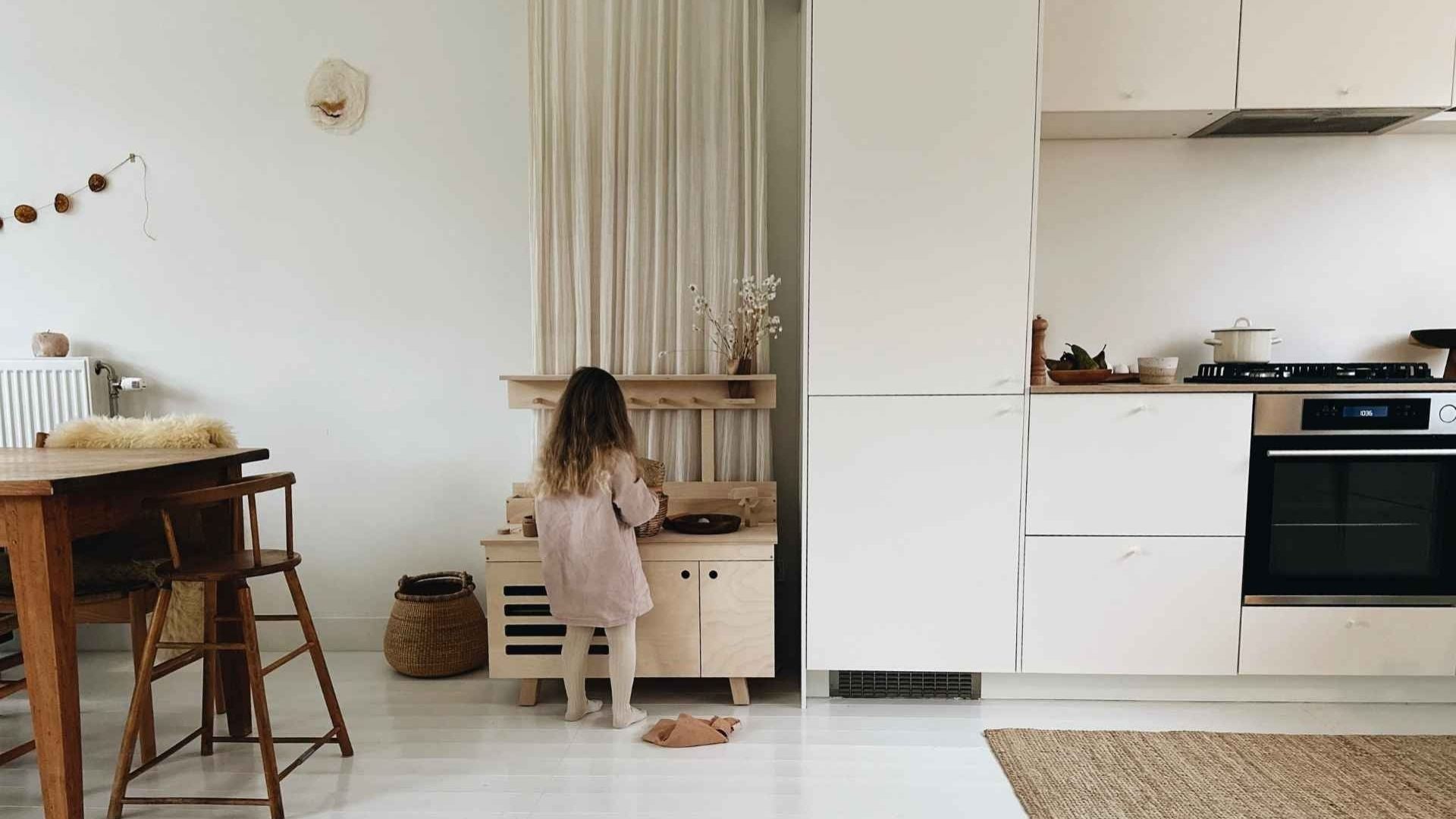A text by Marie (GRIMM'S)
As young children grow, many exciting things happen. They also become increasingly familiar with their own abilities and skills and continually develop them. This is especially noticeable when building.
Very young children, who are making their first attempts at building, tend to build on one level, placing the blocks next to each other. The next step is building upwards, typically creating towers by stacking blocks on top of each other. From this foundation, the building process develops, becoming increasingly creative and ultimately resulting in structures that spring from the child's imagination.

Building is one of our passions, and not only is it incredibly fun, it also playfully promotes fine motor skills, creativity, and coordination. To avoid unnecessary frustration, it's best to match the child's current skills with the materials. This way, it doesn't lead to overexertion or boredom. This is completely individual for every child, but there are a few useful tips we'd like to share with you. But first, a short but important digression on the topic of motor skills.
Whoever says fine motor skills must also say gross motor skills
The term "gross motor skills" is often used somewhat ambiguously in everyday language. Gross motor skills are by no means a lack of ability to perform precise movements, although this is often used with somewhat negative connotations. Gross motor skills simply involve completely different movements than fine motor skills, but are at least as important.
Gross motor skills refer to all large movements that require the large muscles in the arms, legs and back. They are needed for many everyday physical activities, such as sitting, crawling, walking, jumping, climbing, etc. Babies and toddlers therefore first develop their gross motor skills, learning to lift their heads, coordinate their arms and legs, and turn their entire bodies. Muscles, body awareness, and balance are important for this. These skills develop and expand naturally as the child simply practices these natural activities over and over again.

Fine motor skills include the smaller and more delicate movements of the hands, fingers, feet, toes, face, mouth, etc. Babies and young children develop their fine motor skills step by step, starting very simply. They first move their hands and feet, put them in their mouths or toward each other, clap, and eventually grasp specific objects. This develops hand-eye coordination, and the pincer grip becomes increasingly effective and more precise.
Toddlers also develop fine motor skills casually, for example, while painting, playing with clay, or playing with marbles, beads, and building blocks. Every small movement helps them further develop their control and coordination. Babies also perceive and eventually adapt to the facial expressions of others from an early age, forming part of their fine motor skills.

Fine motor skills for small & large hands
We never tire of emphasizing how important and helpful play is for children's development. Motor skills also benefit from play. In favor of the imagination, we don't believe in predefined rules when playing. But there are actually a few tricks that can be helpful to adapt building to the child's current developmental stage and thus support small successes:
The smaller the hands, the larger the building materials: The large pieces are easy to grasp and provide stability and a first sense of achievement during construction. The rough surfaces of our materials support this by ensuring that the individual components stay firmly in place and don't slip easily.
The smaller the hands, the fewer building materials: The selection should not be overwhelming and the options should therefore be somewhat limited at first, so that it is easier to concentrate on what is given.
The smaller the hands, the more suitable the basic shapes are for building: Basic shapes provide a wonderful and predictable basis for building and provide initial experience with geometric shapes.

The larger the hands, the smaller the building materials: As children grow older, their building materials can also become smaller, providing more building options. However, this doesn't mean that large building materials are being replaced. They are simply being supplemented. Large building materials are still particularly suitable for the basic construction.
The larger the hands, the more building materials you need: The amount of building materials you need actually increases to implement your own ideas and enrich the base with details. This makes the building experience interesting and endlessly redesignable.
The larger the hands, the more suitable organic shapes are as a complement: When building with organic shapes, the results are always somewhat surprising. It's not clear, as with two cubes of the same size, how the building blocks will interact, what new shapes will emerge, etc. This creates new challenges and interesting structures when combined.

When young and old play together
It's also particularly interesting to observe that older children often play longer when having younger siblings, even when other children of the same age may no longer do so. This creates a multi-age play environment where everyone can contribute their skills, ideas, and style of play, and everyone learns from each other. Smaller play materials can also be reserved for older children, thus granting them a certain degree of exclusivity, which the younger ones can then enjoy at a later age.
Our play materials playfully support fine motor skills for both small and large hands. Therefore, we've put together a few play ideas that specifically stimulate fine motor skills. Some of our products are even available in different sizes. So, we're truly a great resource for fine motor skills, because our play materials are simply perfect for this. They playfully support fine motor skills for both small and large hands.
First building with Giant Building Blocks or the Large Stepped Pyramid.

Advanced building with the Small Stepped Pyramid and the Concentric Circles and Rings.

Sorting with the Seven Friends in Bowls or the Sortingboard.

String beads with our large, medium and small Wooden Beads.

Create pictures and patterns with the Acrylic Glitter Stones.

Build ball runs with the Large Rainbow and Wooden Balls.

Children are small people with heads full of ideas and arms and legs brimming with energy. When children are allowed to do what they naturally want to do—namely, experiment with where to put small things, how many things can be stacked on top of each other before everything collapses, and what happens when you tip lots of little balls into the deep-pile carpet and then have to pick them out again—they can learn a great deal about their fine motor skills.
Everyday life offers plenty of opportunities to develop fine motor skills. The autonomy phase, when children want to do everything themselves, also contributes to this: they can put buttons in their buttonholes, tie their shoes, press doorbells and elevator buttons, and crack eggs into the mixing bowl themselves. Fine motor skills are also trained through daily play, painting, and various crafts.
And because there are so many everyday and play situations in which children automatically train their fine motor skills without explicit encouragement, a focus on fine motor skills development is usually unnecessary. However, offering appropriate play materials and encouraging children to do things on their own are definitely helpful and a lot of fun, too. And so, through their curiosity, children intuitively and without even realizing it, constantly learn more than we adults can ever dream of.

